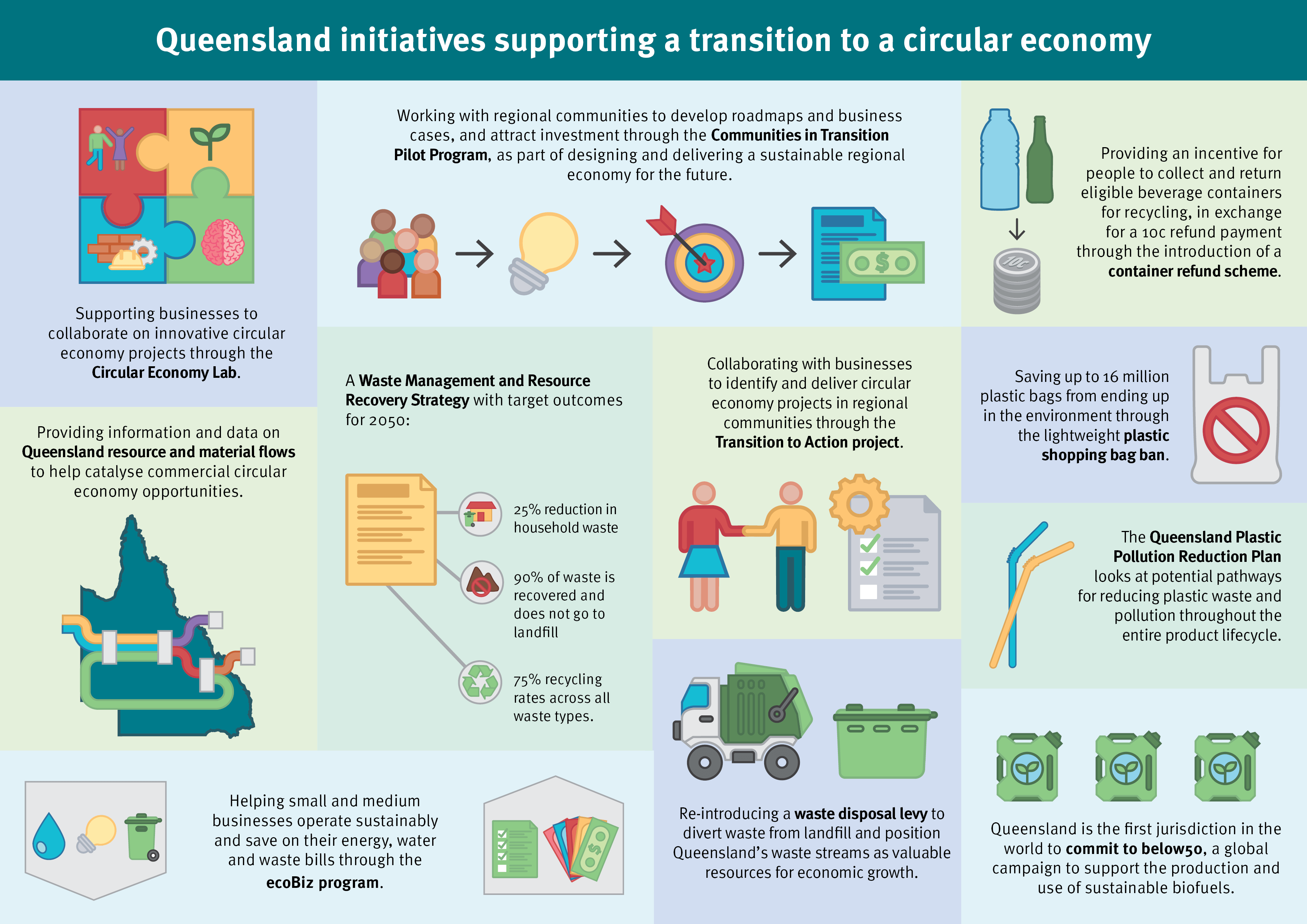Circular Economy
Circular Economy
What is a circular economy?
A circular economy is a production and consumption model that seeks to keep resources in their highest value use for as long as possible. In contrast to the traditional ‘take, make and dispose’ model, the circular model aims to extend the lifecycle of materials. At the end of each service life, materials are recovered and regenerated into new products.
Three principles underpin the circular economy model:
- design out waste and pollution
- keep products and materials in use
- regenerate natural systems.
Why is circular economy important?
In 2017–18, 5,947,000 tonnes of headline waste (such as construction and demolition, commercial and industrial and municipal solid waste) was disposed at landfill sites in Queensland. Waste of any type represents a loss to the economy by undervaluing the time and money invested in producing, for example, food and other products that are disposed of without living out their fullest purpose.
As the world’s population continues to grow, so too does resource consumption. There is broad consensus that the traditional linear model of ‘take, make, and dispose’ cannot sustain the global population’s growing demand for food, water, clothing and shelter.
Transitioning to a circular economy can help address these challenges by seeking to ‘close the loop’ in resource consumption. It provides a framework for harnessing resources to capitalise on new economic opportunities, and creating jobs, while building more economically, socially, and environmentally resilient communities.
A circular economy can support Queensland Government commitments to create jobs in a strong economy, transition to a net zero waste and zero net emissions economy by 2050.
How is Queensland transitioning to a circular economy?
Queensland is in the early stage of an industry-led transition to a circular economy. Some businesses and industry sectors are actively pursuing opportunities to implement circular economy practices in their operations and meet increasing demands for circularity (including lower environmental and social impacts) through global supply chains.
The Queensland Government supports the transition to a circular economy. Example initiatives are illustrated in Figure 1.
Benefits of a circular economy for Queensland
The World Economic Forum estimated the value of a circular economy in Australia could be up to $26 billion per year by 2025 and contribute significantly to reducing emissions.
Like the experience of other global and local jurisdictions, a circular economy has the potential to deliver substantial benefits to Queensland. Benefits include:
- sustainable economic growth
- new jobs
- skills development opportunities in current and emerging industries (e.g. biotechnology and resource recovery)
- improvements in environmental quality from less landfill pollution and depletion of natural resources
- social benefits such as improved public health.
More information:





